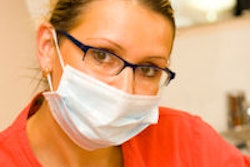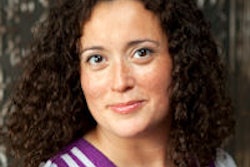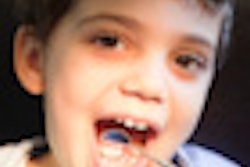
Independent practice dental hygienists (IPDHs) in Maine are claiming victory with the signing into law of LD 1891, which expands their duties and allows them to take a broad range of x-rays in underserved areas of the state.
LD 1891 also allows IPDHs to own radiograph equipment and requires them to have x-rays they take read by a dentist within 21 days.
In June 2011, Maine legislators passed LD 230, directing the Maine Board of Dental Examiners to implement a two-year pilot project that would expand the scope of IPDHs in underserved areas without the presence of a dentist. The dental board was also directed to develop rules for the pilot project.
As originally written, however, the board's proposed rules restricted IPDHs to taking only bitewing and periapical x-rays and prohibited them from taking other types of x-rays. This prompted the involvement of the U.S. Federal Trade Commission, which told the board in November that the proposed rules were too restrictive and could undermine the project's purpose.
Even so, in December the board voted to retain the language describing what it considers to be permissible x-rays (bitewings and periapicals) and reject a motion to add panoramic images to that language. This hindered the pilot project, according to Rep. Heather Sirocki (R-Scarborough), a registered dental hygienist who co-sponsored LD 230.
"The proposed rules significantly weakened the program by allowing only two types of x-rays," she said. "They did not permit the so-called 'full mouth series' (FMS). This was puzzling, since the FMS is comprised of both periapicals and bite wings, which were permissible. By limiting the radiographs, an IPDH would find it difficult to justify the investment in expensive equipment and this, in turn, would significantly affect the outcome of the pilot."
Dental board's position
In order to bypass this logjam, in January Gov. Paul LePage submitted LD 1891, which was sponsored in the Legislature by Sen. Earle McCormick (R-Kennebec), Senate chair of the Health and Human Services Committee. The bill clarified the legislative intent of the pilot by listing specifically the types of radiographs an IPDH can perform.
“In Maine, the primary reason for visits to emergency departments is dental pain.”
— Heather Sirocki (R-Scarborough)
"Independent practice hygienists with radiography equipment will offer a valuable and more affordable service to parts of the state where the need is greatest within a defined and controlled study," Rep. Sirocki said.
There are about 40 IPDHs in Maine and another 10 or so who have certifications pending, she noted. Enabling them to provide more services in underserved areas will help the state address its significant and growing shortage of dental care, according to Sirocki.
"In Maine, the primary reason for visits to emergency departments is dental pain," she said. "The cost runs into millions of dollars every year."
The dental board did not take a position on LD 1891, according to Doug Dunbar, a spokesman for the board.
"Through its chair, the board offered to serve as a resource to the legislative committee that was reviewing the bill, if there were questions or if information was desired," he said in an email to DrBicuspid.com. "The board believes it's important to make sure all Maine people have access to quality dental care, and will work to implement this new legislation."
Toward self-regulation
The new law is the latest in a series of legislative initiatives designed to help Maine address its growing dental access-to-care issues by expanding the scope of what IDPHs are allowed to do in federally underserved areas, according to Pat Jones, RDH, a lobbyist for the Maine Dental Hygienists' Association. LD 1891 also granted a one-year extension to the pilot project, she noted.
"This is going to mean good things for the people of Maine," Jones told DrBicuspid.com. "This is a pilot project for the federally designated healthcare shortage areas of this state, and there are more than 250,000 people live in these shortage areas. So we are very happy about this."
But there is still more work to be done, she added.
"Last year we got LD 70 passed, which means that starting in October 2012, IDPHs can bill Medicaid for their services," she said. "And previously we got a bill passed that ensures all insurers reimburse IDPHs for their services."
The next step, according to Jones, is self-regulation.
"We are going for independent self-regulation," she said. There are 1,300 dental hygienists in the state and 500-600 dentists and we need to be able to regulate ourselves -- like the nurses have their own board."
A bill proposing IDPH self-regulation will be submitted to the state legislature in January 2013, along with a bill that would introduce the midlevel provider model to Maine, Jones added.



















